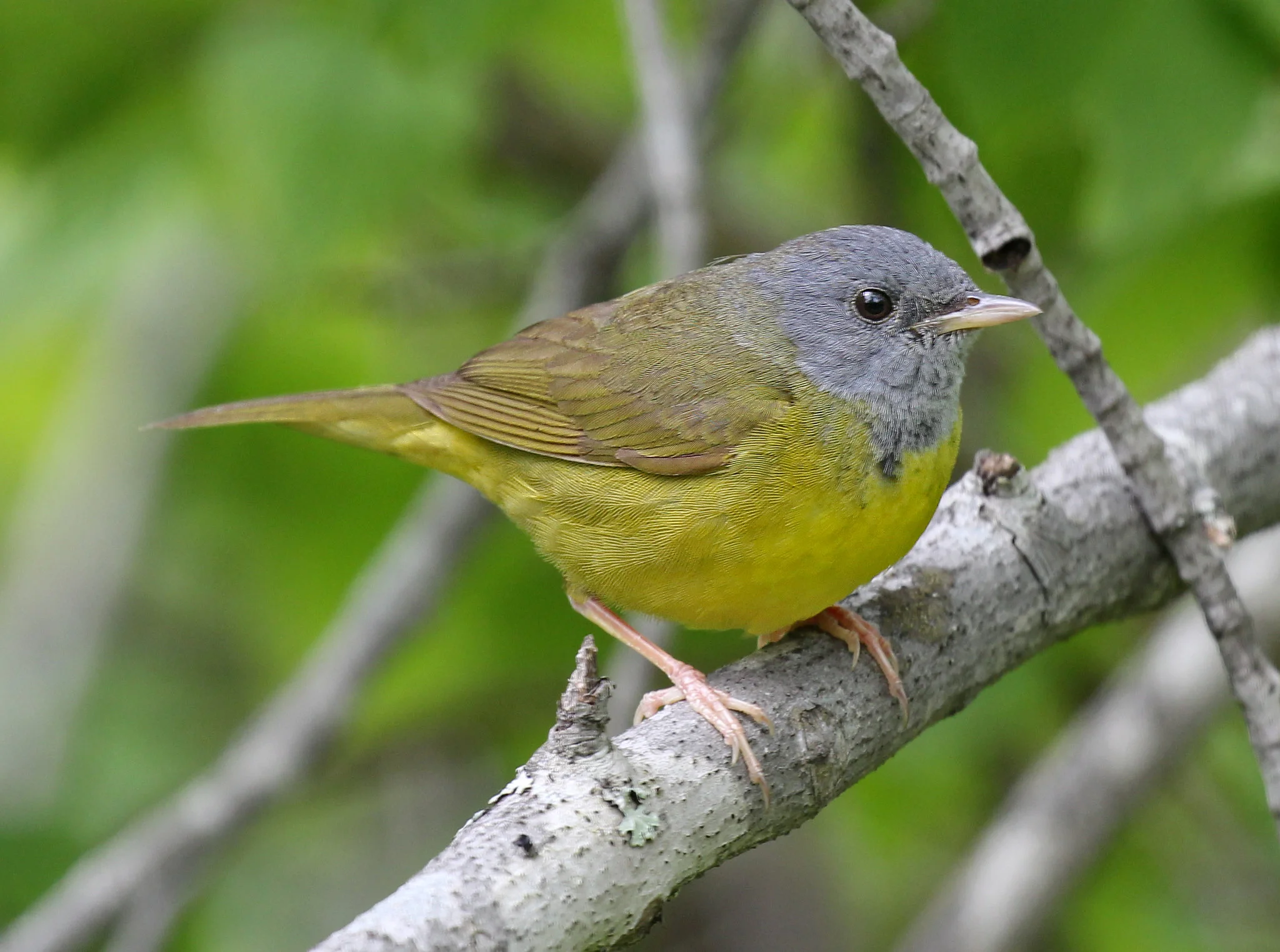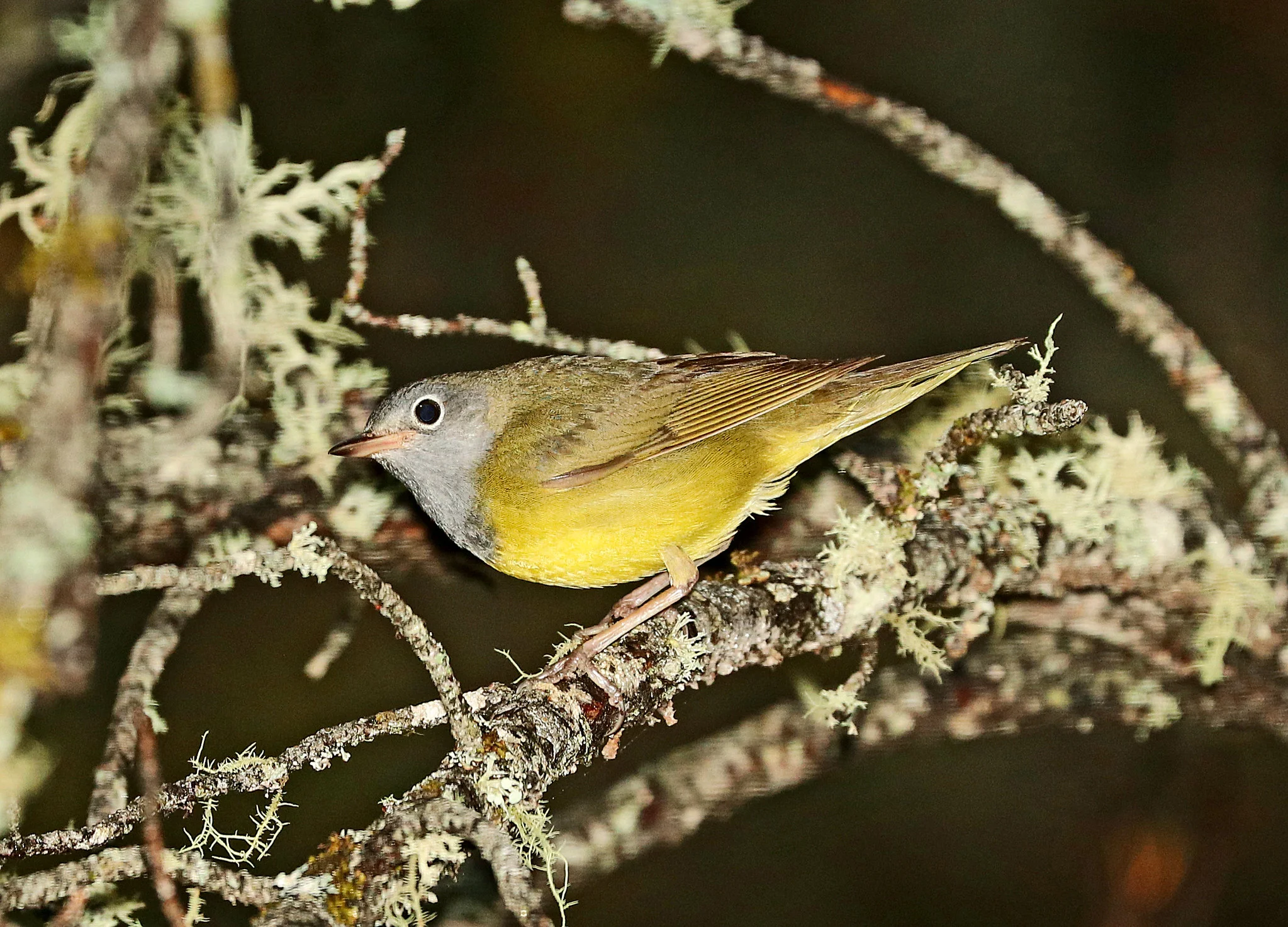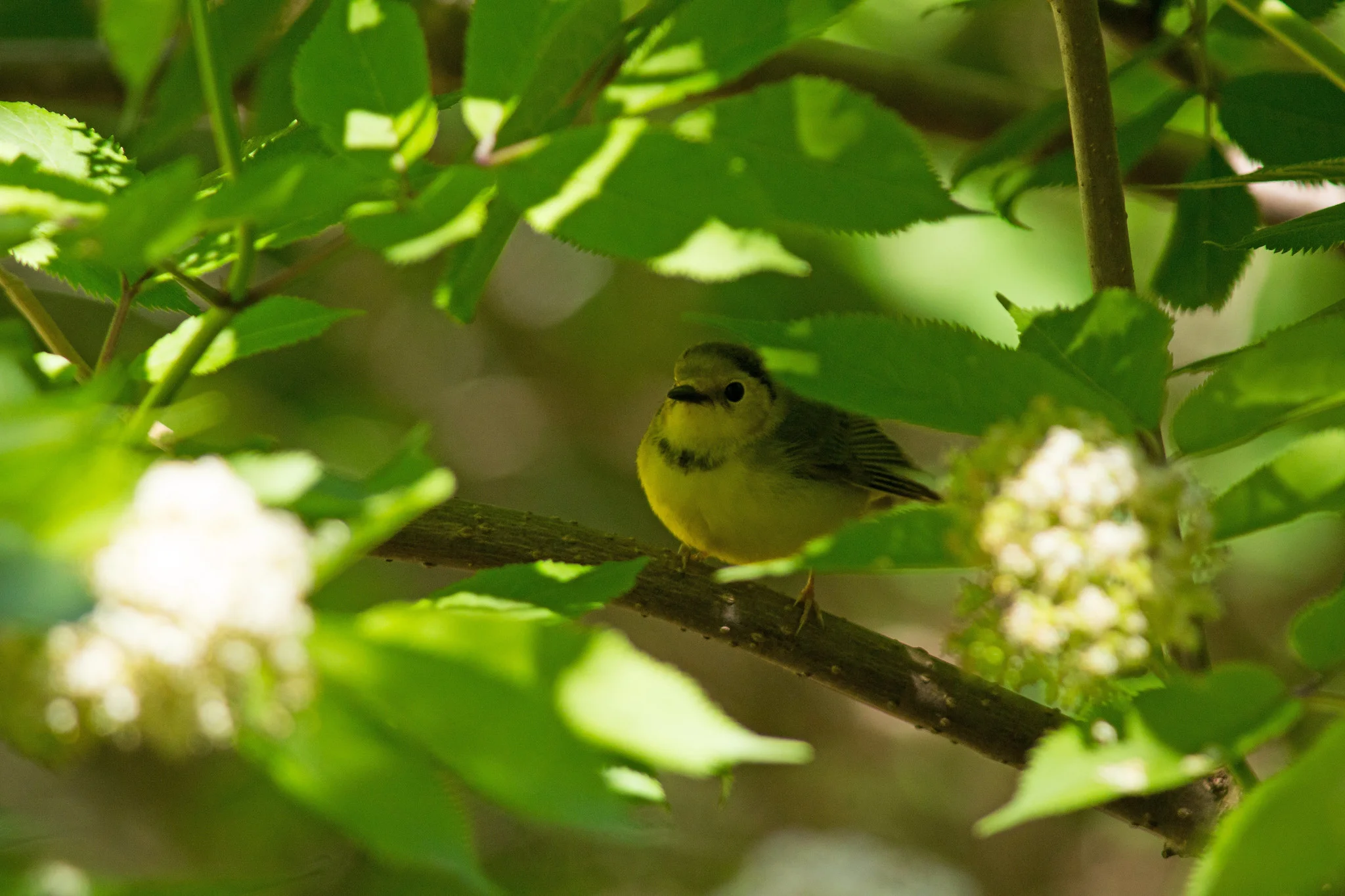Description
- Mourning Warblers are rotund birds with medium-length tails and sizable beaks for a warbler.
- Mourning Warblers can be variable in size, with some birds under 4 inches in length and others nearly 6 inches long. These birds typically weigh 0.4 to 0.5 ounces.
- Male Mourning Warblers have slate gray hoods that cover their heads and necks. Males also have black throats, green backs, wings, and tails, and yellow underparts.
- Females have pale gray hoods, green backs, wings, and tails, and yellow underparts. Female Mourning Warblers also have an incomplete white eyering.
- Immature males look similar to adult females, but they may have black coloration developing on their yellow throats.
- Immature females do not have a hooded appearance, instead having a pale gray-green head, yellow throat, yellow underparts, and green backs, wings, and tails. Additionally, immature females may have a complete white eyering.
Behavior
- Mourning Warblers have a secretive nature, as they tend to stay hidden within vegetation rather than perch on an exposed location. Mourning Warbler males establish territories that are about 2 acres large once on their breeding ground. Males, not females, act territorial and drive away intruders.
Diet
- Mourning Warblers primarily eat insects and other small invertebrates, though they are known to consume berries at times.
Habitat
- Mourning Warblers seek habitat that has experienced some sort of disturbance in its recent history. Young, early successional habitats and habitats where the plants are only a few years old are perfect for these birds.
- The shrubs and young trees of early successional habitats are ideal for Mourning Warblers. Disturbances such as fire, logging, and road construction are often inadvertently beneficial in creating Mourning Warbler habitat.
- During migration and winter, Mourning Warblers are found in the same type of habitat whenever it is available.
Range
- This species breeds throughout much of the upper Midwest, the Northeastern United States, parts of Appalachia, and much of southern Canada.
- In the winter, Mourning Warblers travel to Central and South America.
Breeding
- Mourning Warblers are monogamous by nature. Unlike many warbler species, male birds assist females with incubating the eggs. Both male and female birds feed the nestlings when hatched.
- Females probably construct the nest by themselves. Nests are typically placed on the ground or elevated slightly above the ground in thickets that are near clearings in the habitat.
- A cup-shaped nest made of leaves, grasses, bark, and plant fibers is constructed, and the interior of the nest is lined with soft materials such as hair, feathers, and lichens.
- It is not known how many clutches of eggs a Mourning Warbler might lay in one breeding season, but it is likely 1 to 2 clutches. Anywhere from 2 to 5 eggs are laid in each clutch, and it likely takes between 10 to 14 days for eggs to hatch. Nestlings probably leave the nest under 2 weeks after hatching.
Backyard Birding
- Anyone who observes a Mourning Warbler in their backyard should consider themselves lucky, as these elusive birds will certainly not visit bird feeders or nest in birdhouses.
- Mourning Warblers may visit bird baths that are surrounded by thick vegetation. If you have forested habitat in your backyard with patches of young plant growth, you may be able to find Mourning Warblers on your property.
Population Status
- Over 14 million Mourning Warblers exist today despite the notion that this species has lost almost half of its total population in the last half-century.



